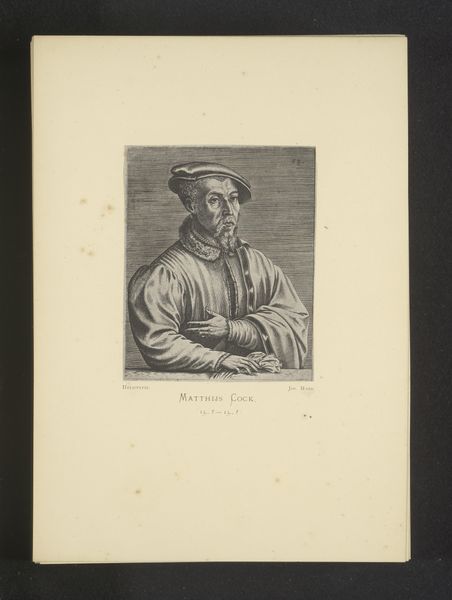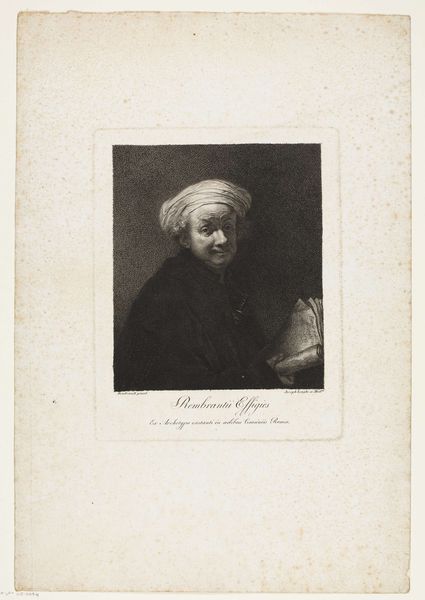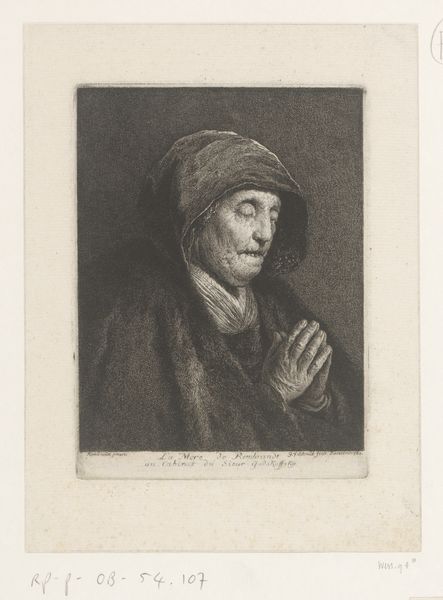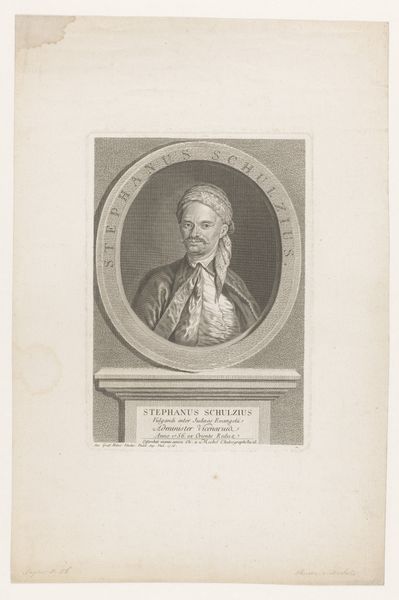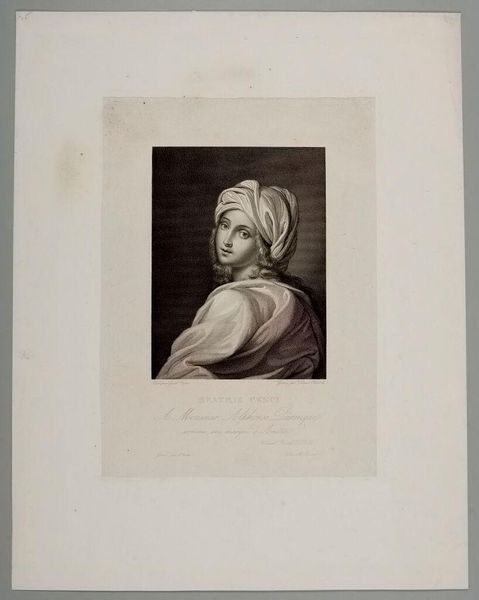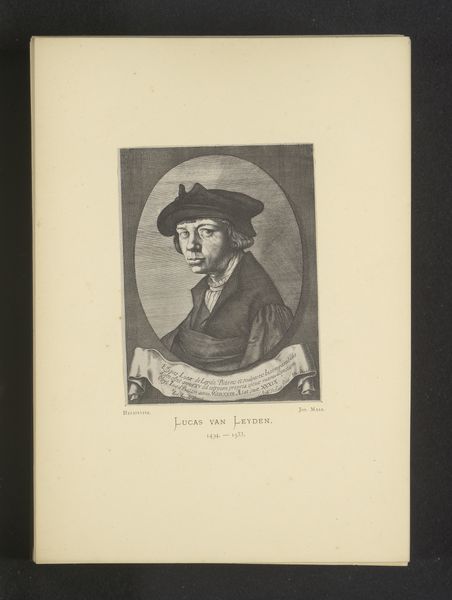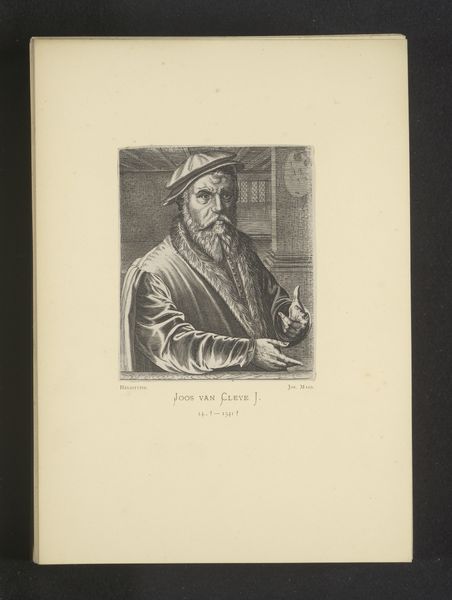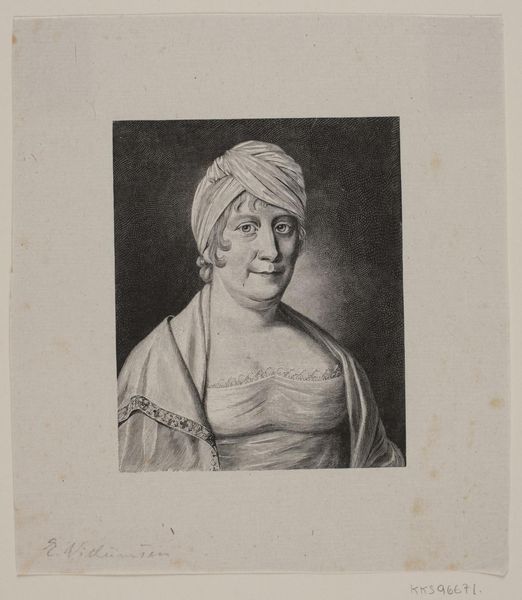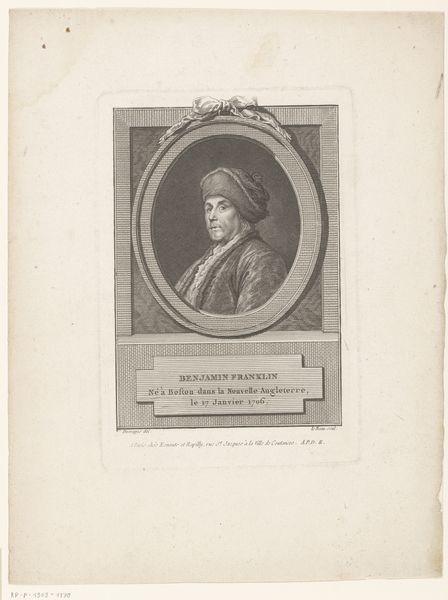
Reproductie van een gravure van een portret van Joachim Patinir door Cornelis Cort before 1877
0:00
0:00
print, engraving
#
portrait
# print
#
northern-renaissance
#
engraving
Dimensions: height 109 mm, width 87 mm
Copyright: Rijks Museum: Open Domain
Curator: This Northern Renaissance engraving, a reproduction of a portrait of Joachim Patinir, pulled before 1877, strikes me with its intensity of gaze. What's your immediate impression? Editor: Somber, definitely. There's a quiet gravity to it. The sharp lines create a striking visual contrast that draws your eye directly to his face. A man aware of being observed, wouldn't you say? Curator: Absolutely. And Joseph Maes, though not the original artist, captures the spirit beautifully through this print. Cornelis Cort, the initial engraver, set quite a high standard in the 16th century, and Maes carries that legacy forward. Editor: The textures are really compelling— the soft folds of the draped fabric against the stiff brim of his cap, they really tell you about status and profession without having to know too much, don't they? Speaking of, who exactly was Joachim Patinir? Curator: Ah, Patinir was a pioneering landscape painter of the time, remember he worked with the great Albrecht Durer, painting landscape backgrounds, and bringing a freshness to art. He captured scenes with these vibrant colours, blending earthly details with fantastical visions, influencing artists for generations. The portrait of the artist feels really charged here because he seems so very...real. Editor: I agree. Knowing that he was a visionary really alters the way you interpret his thoughtful expression. Almost as if he's grappling with some inner muse...it humanizes the master painter, as if he's wondering how he'll possibly realize his ambitions on the canvas. But it does make me wonder, how does representing a known artist through print impact their historical legacy? Curator: Printmaking makes art accessible. Think of it democratizing aesthetics, but it also raises fascinating questions about authorship, reproduction, and the circulation of artistic ideas. In this case, the artwork serves both as a portrait and historical record, as Patinir comes alive to an even bigger audience, bridging the Renaissance to new artistic periods. It certainly elevates my interest, even more than just gazing at art. Editor: It is true, and given the themes Patinir tended to use in his paintings this print provides a nice capsule introduction to his style of representation, humanizing someone known for art rather than the art itself. Curator: A somber encounter and compelling portal into a historical narrative, indeed.
Comments
No comments
Be the first to comment and join the conversation on the ultimate creative platform.


